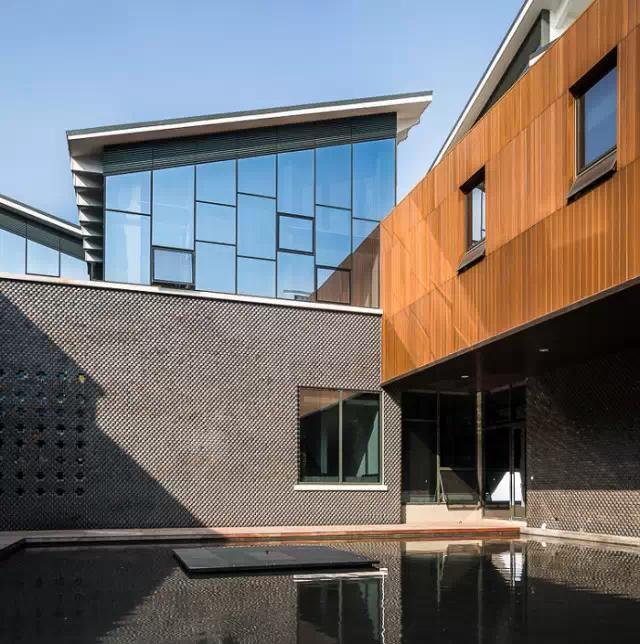


This year, despite the impact of the COVID-19 and the impact on major economies around the world, China's aluminum industry has unswervingly implemented a series of regulatory policies such as the "notice on the special action plan for cleaning up and rectifying illegal projects in the electrolytic aluminum industry" on the basis of a basically good domestic economy. The supply side structural reform has been deepened, and the demand side market development has been steadily promoted, The profitability of the industry has been continuously enhanced, and it is gradually becoming stable on the road of high-quality development.
In 2021, China's point melting aluminum output was 38.5 million tons, with a year-on-year increase of 4.8%. In the first half of this year, China's electrolytic aluminum output was about 19.76 million tons, basically the same as that of the same period last year. Since last year, under the influence of imported inflation, capacity ceiling, dual control of energy consumption, power and production restriction and other factors, aluminum prices have been running at a high level, and the price per ton of aluminum has approached a high of 25000 yuan, hitting a new high in the past 15 years. However, recently, due to the rising cost of raw materials and the continued interest rate hike of major global economies, the market worried about the global economic recession, which led to a sharp correction in aluminum prices, and even touched the breakeven point of some enterprises again. At present, China's aluminum industry is taking promoting the realization of the "double carbon" goal as the core, based on the new development stage, implementing the new development concept, and accelerating the construction of a new pattern of domestic and international double cycle aluminum development.
01· Green low carbon aluminum
At present, under the guidance of the national "double carbon" goal, the carbon reduction work of various industries is accelerating, and the aluminum industry bears the brunt. As we all know, the aluminum industry has two distinct industrial characteristics of energy consumption and energy conservation: on the one hand, electrolytic aluminum at the upstream of the industrial chain is called "electric tiger", which is undoubtedly a large energy consumer; On the other hand, aluminum products are the preferred materials for energy-saving and low-carbon development of downstream application industries due to their light weight, corrosion resistance, easy recycling and other advantages. The largest carbon emission in China is from the coal-fired power industry. For example, the proportion of electrolytic aluminum produced by coal-fired power is about 80%. Therefore, the task of carbon reduction in the aluminum industry, especially in the aluminum smelting industry, is very arduous in the future, and controlling the green power consumption of the aluminum industry is the most critical.
The green and low-carbon development of the electrolytic aluminum industry depends on two main factors: one is to increase the proportion of green and low-carbon electricity in the electrolytic aluminum industry, and the other is to increase the proportion of green electricity in the overall power system.
Compared with the high carbon dioxide emissions from the production of electrolytic aluminum by thermal power, hydropower with almost zero carbon dioxide emissions has become the main energy dependence for electrolytic aluminum to seek green and low-carbon development. In recent years, based on the distribution of China's power energy structure, in order to achieve green and low-carbon energy consumption, China's electrolytic aluminum production capacity is also accelerating the transfer to Yunnan and Sichuan, which are rich in hydropower energy. At present, among the 6.46 million tons of compliant electrolytic aluminum production capacity of Weiqiao venture group, about 3.188 million tons of hydropower aluminum production capacity have been transferred to Yunnan Province, including 3.05 million tons of Yunnan Aluminum Corporation. Among the 1.7 million tons of compliant electrolytic aluminum production capacity of Henan Shenhuo Co., Ltd., 900000 tons have been transferred to Yunnan to build hydropower aluminum, and its low-carbon green aluminum accounts for more than half. Its sub group transferred to Yunnan Dali with an annual output of 900000 tons of green hydropower aluminum project, which has been implemented. At the beginning of this year, it signed an investment agreement for 500000 tons of recycled aluminum and 300000 tons of aluminum processing projects. In addition to Yunnan, many hydropower aluminum projects have also been arranged in Sichuan. Henan Zhongfu Industrial Co., Ltd. has transferred 250000 tons of qualified electrolytic aluminum production capacity to Sichuan Guangyuan to build a green hydropower aluminum project. According to incomplete statistics, by the end of 2021, China's hydropower aluminum accounted for about 21%.

Although the proportion of hydropower energy applied to the aluminum industry has been increasing in recent years, China's hydropower resources still have great potential to be developed. It is reported that the United States has developed 70% of its hydropower, and the utilization ratio of hydropower resources in Iceland, Norway and other countries has reached more than 90%. Compared with foreign countries, the development proportion of hydropower resources in China is less than 30%, and the development potential is huge. China's terrain is generally high in the West and low in the East. There are a lot of hydropower resources to be developed in the central and western regions, and the bauxite stock in the western region is very rich. At the same time, the bauxite content in surrounding countries is also considerable, which provides a strong resource guarantee for China to vigorously develop hydropower aluminum. Baihetan Hydropower Station, the largest power generation water station in China, can generate more than 62 billion kwh per year. On the Jinsha River at the junction of Sichuan and Yunnan provinces, Baihetan and its upstream Wudongde, and the downstream Xiluodu, Xiangjiaba, Three Gorges and Gezhouba hydropower stations form the world's largest clean energy corridor.
It can be seen that there is still great potential for the construction of hydropower aluminum projects in China in the future, but hydropower is not the only standard configuration for the development of electrolytic aluminum green energy. With the development and improvement of green energy in China, the construction and improvement of diversified low-carbon energy, the green energy power consumption mode of aluminum industry is also constantly innovating and emerging.
At present, in addition to hydropower, wind power and photovoltaic power generation in all parts of China have also been applied to industrial production with the development of power grid construction. For example, Qinghai Province, the province with the highest proportion of clean energy and new energy installed capacity in the country, has a cumulative installed capacity of 40.5 million KW, of which 36.57 million kw of clean energy installed capacity, accounting for 90.3%, and 24.64 million kw of new energy installed capacity, accounting for 60.9%. At present, Qinghai Province has an electrolytic aluminum production capacity of about 2.7 million tons. Although these electrolytic aluminum enterprises use grid electricity, on the whole, they still indirectly meet the requirements of green and low-carbon production. Gansu Province, which is rich in wind and light resources, is also vigorously developing the clean energy industry. The exploitable capacity of wind power and solar power generation technologies in the province reached 560 million KW and 9.5 billion kw respectively. Up to now, the installed capacity of new energy in Gansu Province accounts for nearly half of the total installed capacity of the whole network, and the utilization rate of new energy installed power generation has increased from 60.2% in 2016 to 96.83% at present. In 2021, the new energy power generation of the province exceeded 40billion kwh, and the carbon dioxide emission reduction was about 40million tons. Among them, Gansu Longxi's new energy power has also been successfully transmitted to the eastern region, and the annual external power transmission will exceed 100 billion kwh. At the same time, peak shaving power supplies such as pumped storage, chemical storage and thermal power supporting the development of new energy are also under construction. Through the combination of energy storage and new energy power plants to form a virtual power plant and participate in peak shaving, the peak shaving capacity of the power grid system can be further improved, making new energy more stable and reliable. In addition, Inner Mongolia and other places are also rich in solar energy. With certain energy storage technology and combined with thermal power distribution, they also have strong competitiveness in green energy in the future.
It is reported that among the planned total installed capacity of China's new power system of 6-8 billion kw, wind power generation and photovoltaic power generation account for 70% and "stable power supply" accounts for 30%. In 40 years, the period is roughly every ten years. In turn, we will take the road of carbon control power, carbon reduction power, low-carbon power, and finally close to carbon free power, and complete the construction of super large-scale power transmission and transformation infrastructure. Key technologies such as energy storage, transformation, consumption and output are also being accelerated. The overall green power supply capacity of the power system is shifting and speeding up.
At present, China's aluminum enterprises are also actively seeking a variety of local power energy rationing. The largest roof photovoltaic power generation project in Yunnan will be put into operation by the end of this year. The project can provide 20million kwh of green power every year, save 6000 tons of standard coal, reduce 20300 tons of carbon dioxide, and 6100 tons of carbon dioxide, nitrogen oxides and soot. It has become a demonstration and landmark project to help the construction of Yunnan Aluminum green aluminum industrial park. Recently, the first distributed photovoltaic project of electrolytic aluminum plant in China - the 23 MW distributed photovoltaic project of Qingtongxia under the State Power Investment Group Co., Ltd. has been connected to the grid for power generation. As of May 10, the project has generated 5million kwh in total, and all the generated power has been supplied to the 430000 ton electrolytic aluminum project of Qingtongxia Aluminum branch of Guodian aluminum investment corporation. This marks that this electrolytic aluminum production enterprise with a history of nearly 60 years has embarked on a clean, green, low-carbon high-quality development road.
A few days ago, the national development and Reform Commission and other departments jointly issued the implementation plan for synergies in pollution reduction and carbon reduction, which clearly stated that by 2030, the proportion of renewable energy used in electrolytic aluminum in China will be increased to more than 30%.
In the future, with the acceleration of green power construction in China, the proportion of green low-carbon production in electrolytic aluminum and even the whole aluminum industry will increase rapidly.
02·Aluminum for international cooperation
International capacity cooperation refers to the cooperation between China's high-quality and excess capacity and countries with industrial resources and similar capacity gaps in the world. Based on the new idea of international production capacity cooperation, the realization of the docking of bilateral exhibition strategies is expected to upgrade the level of bilateral economic cooperation to the strategic level of long-term development. It is not difficult to see that the multi-dimensional win-win situation of international production capacity cooperation is the mystery. At the same time, it also means that China will win more partners for peaceful development and create a win-win situation.
For China's aluminum industry, it is to transfer China's surplus high-quality aluminum production capacity to countries with resources and energy. To put it simply, it is to carry out capacity cooperation with some countries with underdeveloped aluminum industry or insufficient aluminum capacity construction to achieve win-win interests and build a global aluminum community.
As we all know, over the years, the bauxite resources required for the development of China's aluminum industry have relied heavily on imports. Since 2020, the annual import volume of bauxite has exceeded 100 million tons. This year, with the increase of China's dependence on foreign bauxite, especially under the promotion of the "the Belt and Road" initiative, Chinese enterprises are more and more willing to mine bauxite overseas.

As an important bauxite producer in the world, Guinea has become an important importer of bauxite and an investor of enterprises in China. Weiqiao entrepreneurial group is the first enterprise to "eat crabs" in this field. At the beginning of 2014, the "win alliance", a consortium composed of Shandong Weiqiao venture group, China Yantai Hong Kong Group, Guinea UMS (a French investment enterprise in Guinea) and Singapore Weili International Group, successfully developed the guinea Bokai bauxite project, and successfully transported the first vessel loaded with 260000 tons of bauxite to Yantai port in May 2019. This is the curtain of international capacity cooperation between Chinese enterprises and Guinea, a West African country, on the aluminum industry. Subsequently, Chalco Guinea BofA project was also put into operation. At present, China's enterprises investing in bauxite projects in Guinea include Xinjiang Zhonghe, China Henan International Cooperation Group and Zibo rundi aluminum company, in addition to Chinalco group and Weiqiao entrepreneurial group, and most of the bauxite projects invested have been put into operation. According to public information, last year, the head of Oriental hope group also went to Guinea to carry out investment investigation and set up a mining company to facilitate bauxite investment and trade in the future. According to relevant data, by 2020, the agreed bauxite production capacity of Chinese enterprises in Guinea has reached about 184million tons.
In addition to Guinea in West Africa, Chinese enterprises have invested a lot in aluminum projects overseas, as well as in Southeast Asia. Slightly different is that in Guinea, bauxite mining and transportation are mainly concentrated, while in Southeast Asia, alumina and electrolytic aluminum are mainly concentrated in a batch of supporting carbon projects in the downstream of the aluminum industry chain. The investment areas in Southeast Asia are mainly distributed in Indonesia, Malaysia and other countries.
As a leading enterprise in international capacity cooperation in the aluminum industry, Weiqiao entrepreneurial group has invested in the construction of alumina plants in Indonesia since 2013. This is also the first large-scale alumina production enterprise in Indonesia. In addition, Shandong Nanshan Aluminum Co., Ltd. and Shaanxi nonferrous metals Holding Group Co., Ltd. have invested and built 2million tons of alumina projects in Indonesia respectively. Now these projects have basically been put into operation.
At present, Chinese enterprises are also investing in several electrolytic aluminum projects in Southeast Asia. Shandong Nanshan aluminum company has also built a 1million ton electrolytic aluminum project and supporting port terminals on the basis of the 2million ton alumina project in Indonesia. Aluminum Corporation of Indonesia, a joint venture between Zhejiang Huafeng Group and Qingshan Industrial Company, is building a 1million ton / year electrolytic aluminum (500ka) supporting and 500000 ton / year pre baked anode project in Qingshan Industrial Park on Sulawesi island, Indonesia. The 1million ton electrolytic aluminum project invested and constructed by Chongqing bosai group in Malaysia. It is reported that Zhejiang Huayou company and Ningbo Liqin company are also willing to invest in electrolytic aluminum projects in Indonesia.
It is worth mentioning that while China accelerates the "going out" of aluminum production capacity, the export of the world's first-class aluminum industry technology is also accelerating, and the export of engineering technology has also driven a large number of industrial equipment in China to go abroad. In recent years, China's aluminum industry engineering project designers - Guiyang Aluminum Magnesium Design and Research Institute and Shenyang Aluminum Magnesium Design and Research Institute have provided a large number of high-quality engineering services to countries along the "the Belt and Road" such as Indonesia, Malaysia, Saudi Arabia, Turkey, Vietnam, Italy and so on. On April 9, 2021, Shenyang Aluminum Magnesium Design and Research Institute Co., Ltd. successfully signed the general contracting project of electrolytic series upgrading and reconstruction project of Indonesia International Aluminum Corporation (inalum) electrolytic aluminum plant, with a contract of about US $100million.
However, it is not difficult to find from the above investment cases that in recent years, the international capacity cooperation of China's aluminum industry is mainly concentrated in Guinea and Indonesia. Guinea mainly concentrates on the mining of bauxite, while Indonesia mainly invests in alumina projects, as well as electrolytic aluminum and supporting industries that have just begun to expand. The main reason for this investment situation is that it was originally formed under the background of the mining restriction order issued by Indonesia, China's aluminum resource exporter.
At present, these problems will not be alleviated in the future, but will intensify. Because with the development of local industrial economy, these countries with rich bauxite reserves have disdained to rely solely on the export of ore resources to develop the local economy, but prefer to rely on international industrial and financial advantages to develop the local aluminum industry, so as to promote domestic economic development, increase local taxes and promote labor employment.

At the right time, in recent years, China's alumina and electrolytic aluminum have been in overcapacity and are in a critical period of macro-control, especially since the national release of Document No. 42 (guidance on creating a good market environment to promote the structural adjustment of the non-ferrous metal industry and promote transformation and efficiency) and Document No. 656 [2017] of the national development and Reform Commission Office (action plan for cleaning up and rectifying illegal projects in the electrolytic aluminum industry) in 2016, The new capacity of electrolytic aluminum is strictly controlled. Although the regulation of the alumina industry is less than that of electrolytic aluminum, the potential excess risk also exists. In order to resolve the hidden worry of overcapacity in the alumina industry, the national development and Reform Commission and the Ministry of industry and information technology jointly issued the notice on promoting the orderly development of the alumina industry in 2018, followed by the regulation policy. In addition, China's alumina industry has produced a large amount of red mud after rapid growth in recent decades, As a result, the environmental accommodation has almost reached the limit. In short, whether in terms of supply side structural reform or environmental tolerance, China no longer has the conditions to continue to vigorously develop the electrolytic aluminum and alumina industries. In addition, in recent years, trade protectionism in the aluminum industry has risen, and the international layout of the aluminum industry is also a powerful way for the aluminum processing industry to deal with international trade disputes and "double anti" investigations.
It is reported that in the first half of this year, Guinean authorities repeatedly stressed that international mining companies in the country should submit plans for the construction of aluminum oxide plants within the specified time limit. Guinea has been seeking to use its mineral resources for economic development, and has repeatedly expressed the hope that investment enterprises can build local ore smelting enterprises, and promised to build local alumina plants to refine bauxite into higher value alumina.
It can be seen that the "going out" of China's aluminum industry is required by the supply and demand of the global industrial structure market. It is time to further explore the international market and develop aluminum for international cooperation. Although there have been some successful cases of China's aluminum industry "going out" in some regions, this is only the beginning. In the future, with the increasing pressure on China to achieve the "double carbon" goal and under the guidance of the "the Belt and Road" initiative, it is believed that Chinese enterprises will cut waves on the road of aluminum for international cooperation, and work with their global colleagues to create capacity cooperation from bauxite, alumina, electrolytic aluminum, and aluminum processing, so as to jointly build a global aluminum community.
03.Recycling recycled aluminum
The aluminum industry has a recycling rate of more than 90%, which highlights its cost advantages in the production process and the advantages of energy conservation and emission reduction in the whole life cycle. Therefore, the development of recycled aluminum industry will become the main growth pole for the advantageous development of the whole aluminum industry in the future.
Once consumed, it will be used for life." Gehonglin, member of the Standing Committee of the CPPCC National Committee and Secretary of the Party committee and President of China Nonferrous Metals Industry Association, believes that high energy consuming products are often high energy carrying products. We should cherish the energy consumption in the initial production process and maximize its conversion into energy carrying in the future recycling. It can be said that recycling is the process of transforming the release of high energy consumption into low energy consumption products. The aluminum material produced with recycled aluminum saves the energy consumption of electrolytic aluminum production through aluminum oxide. Therefore, the development of recycled aluminum industry is of great significance to the sustainable development of China's aluminum industry.
First, the renewable aluminum industry has obvious advantages in energy conservation and emission reduction. Relevant data show that the energy consumption of producing 1 ton of recycled aluminum is only 3%~5% of that of electrolytic aluminum, which can reduce the emission of 0.8 tons of carbon dioxide, save more than 10 tons of water, and reduce the treatment of solid waste, waste liquid and waste residue, which has obvious advantages of energy conservation and emission reduction. According to statistics, during the "13th five year plan" period, the total output of recycled aluminum in China was about 34.8 million tons. Compared with the production of the same amount of electrolytic aluminum, it saved about 120 million tons of standard coal, about 770 million cubic meters of water, about 380 million tons of carbon dioxide and about 696 million tons of solid waste. From 2011 to 2020, China's renewable aluminum output increased from 4.4 million tons to 7.35 million tons, with an average annual compound growth rate of 5.3%. In 2021, China's renewable aluminum output was 8 million tons. It is estimated that by 2025, the total domestic renewable aluminum will reach 11.77 million tons.
Second, the development of recycled aluminum is also an important way to alleviate the shortage of bauxite resources in China. During the 13th Five Year Plan period, the total output of recycled aluminum in China was about 34.8 million tons, which would save about 140 million tons of aluminum ore resources compared with the production of the same amount of electrolytic aluminum. In 2021, the output of alumina and electrolytic aluminum in China was 77.48 million tons and 38.5 million tons respectively, and the bauxite consumed was about 150 million tons. In 2021, the import volume of bauxite in China reached 107.4 million tons, and about two-thirds of the mineral and soil resources need to be imported. Therefore, the development of recycled aluminum is also a favorable way to save mineral resources and alleviate the shortage of bauxite resources in China.
Third, China has reached the peak of aluminum product recycling, and has the key element of developing renewable aluminum industry - resources. By the end of 2021, China's aluminum consumption reserve has reached about 420 million tons. Transportation, construction and packaging containers are the main sources of waste aluminum in China. According to relevant data, transportation is the largest source of waste aluminum recycling in China, accounting for 41%, construction industry accounting for about 34%, and packaging containers accounting for about 21%. The service life of aluminum for construction is 40-60 years, the service life of transportation tools is 10-20 years, and the service life cycle of aluminum for food and other packaging industries is basically about 1-2 years. Since the beginning of the 21st century, the annual sales volume of automobiles in China has exceeded 2million, and has maintained rapid growth. Considering that the service life of transportation tools is 10-20 years, more and more cars will reach the service life in the next few years. According to relevant data, from 2021 to 2023, the growth rate of waste aluminum recovery in China's transportation industry reached 18%-21%, driving the growth rate of total waste aluminum recovery by 8%-16%. Therefore, China will usher in the periodic peak of waste aluminum recycling.
It can be seen that the development of renewable aluminum industry has prominent advantages in alleviating the two core elements of resources and energy for the development of China's aluminum industry, especially at the critical juncture of achieving the "double carbon" goal, which is one of the effective ways to promote the aluminum industry to achieve carbon emission reduction on schedule.
In the "14th five year plan" for the development of circular economy and the "implementation plan for the synergy of pollution reduction and carbon reduction" issued by the state, both emphasize the need to accelerate the development of renewable non-ferrous metal industry, and propose that the aluminum industry should increase the proportion of renewable aluminum, and by 2025, China's renewable aluminum output should reach the target of 11.5 million tons. Industry experts predict that with the peak recovery period of domestic waste aluminum products approaching and the gradual improvement of the waste aluminum raw material import standard system, China's renewable aluminum output will continue to grow significantly by 2030.
Under the encouragement and guidance of national industrial policies, local governments and enterprises have arranged the development of recycled aluminum industry one after another to speed up the project investment and construction. According to the "14th five year plan" for the development of circular economy in Henan Province, by 2025, the output of recycled aluminum in Henan Province will reach 3.8 million tons. In Zouping City, Shandong Province, the renewable aluminum production capacity will reach 1.2 million tons in 2021, and will not reach 3million tons by the "14th five year plan". At that time, the renewable aluminum production capacity will account for 60% of the city's aluminum industry. At the beginning of the year, Pingguo city of Guangxi Zhuang Autonomous Region also held a special strategic deployment meeting for the development of renewable aluminum industry, and issued the "implementation plan for the development of renewable aluminum industry in Pingguo city", proposing to go all out to promote the great development, progress and prosperity of renewable aluminum in Pingguo city. Henan Mingtai Aluminum Co., Ltd. currently has a total capacity of about 1.38 million tons of recycled aluminum. Nanshan aluminum company has also arranged a 100000 ton recycled aluminum project. Luoyang Longding aluminum company is also accelerating the progress of the 500000 ton recycled aluminum project. The new 20 ton heat storage smelting furnace of Baotou Aluminum Company's recycled aluminum production line has been officially put into operation. It can be seen that some people of insight in the industry have been moved by the wind, and a large number of projects have been planned and implemented, and are under intense construction. As Zhang Hongen, honorary chairman of Henan Yulian Energy Group Co., Ltd., said at the signing ceremony of Guangyuan's 500000 ton / year green recycling aluminum resource utilization project, aluminum recycling is a sunrise industry and an important direction for the development of aluminum industry in the future.
It should be emphasized that there are still some factors restricting the development of China's recycled aluminum industry. For example, it is common to degrade the recycling of aluminum products. I hope relevant departments will pay attention to it and make breakthroughs and innovations in aluminum recycling technology and management concept as soon as possible.
Renewable aluminum industry has the advantages of saving resources, energy and protecting the environment. It is an important way for the sustainable development of aluminum industry. In the future, the recycled aluminum industry will become one of the protagonists in the development of China's aluminum industry.

It starts here, but it doesn't stop there. China's aluminum industry should adapt to the five development concepts of "innovation, coordination, green, openness and sharing". Under the background of the new requirements of the development of the "double carbon" goal, we should speed up the "article" of green low-carbon, international production capacity cooperation and regeneration cycle. In addition, we should also do a good job in the eternal topics of scientific and technological innovation, high-end development and so on. Those who do not seek the overall situation are not enough to seek a domain; He who does not seek immortality is not enough to seek a moment. The future of aluminum needs the joint thinking of the whole industry. Let's live up to the ambition of strengthening the aluminum industry, take advantage of the long wind of the times, break through the huge waves, and work together for the future and make new achievements!
Data and pictures come from the Internet